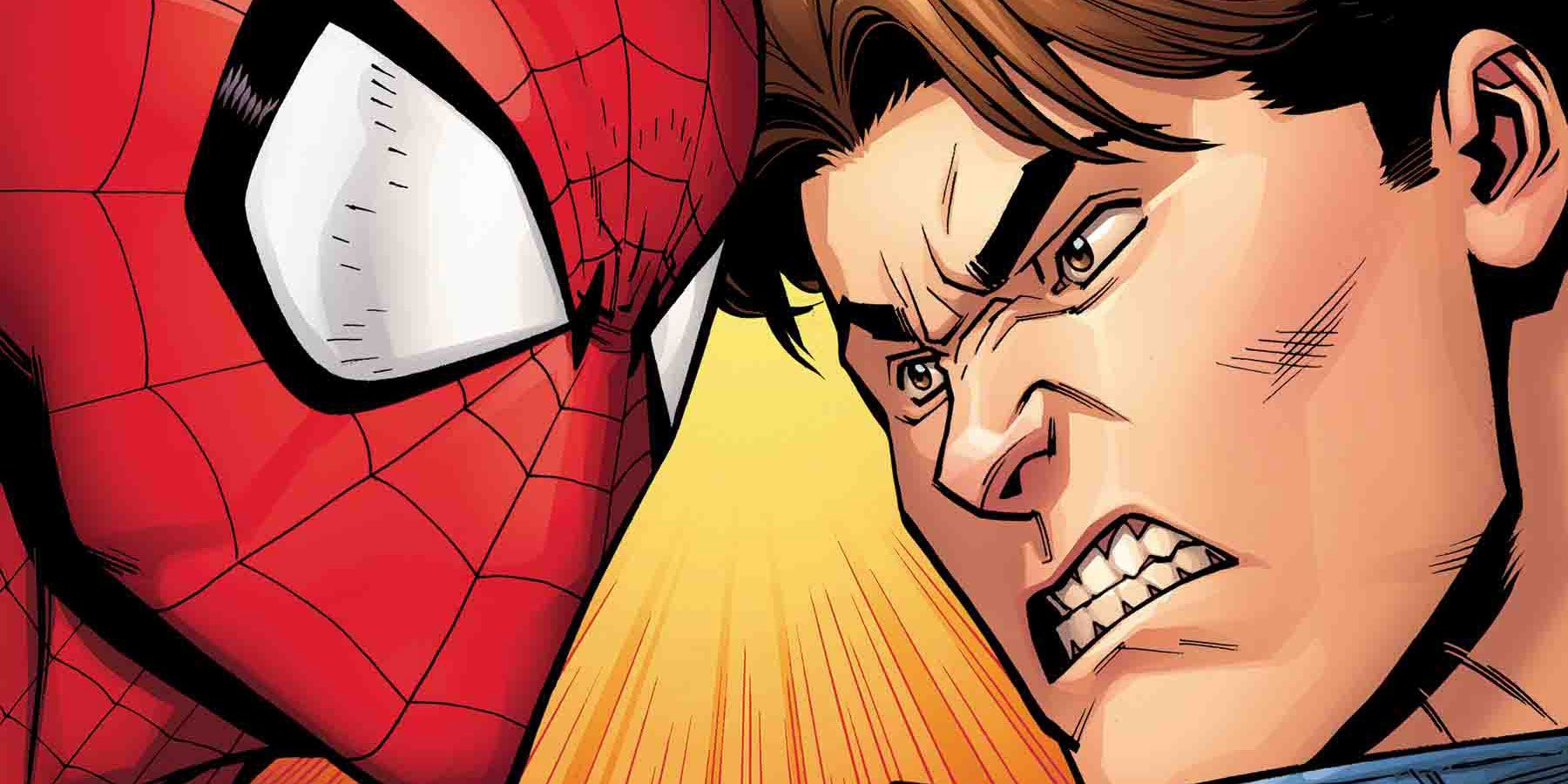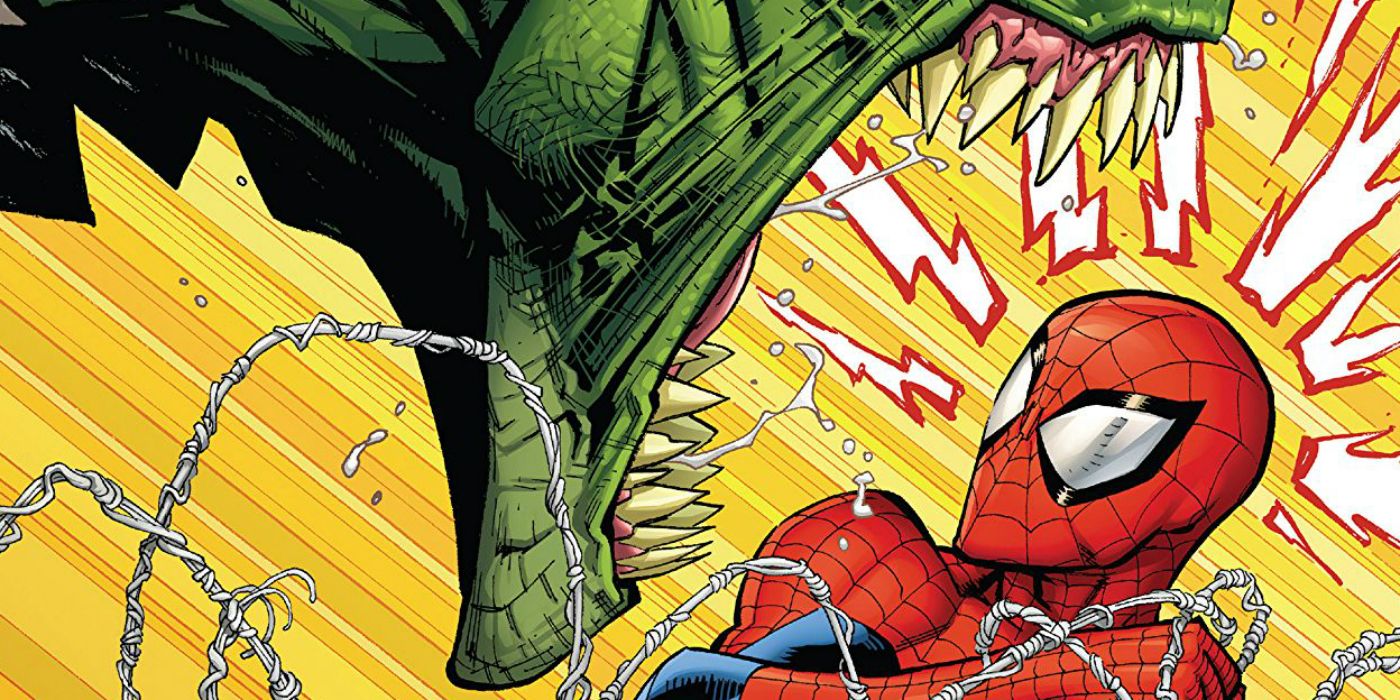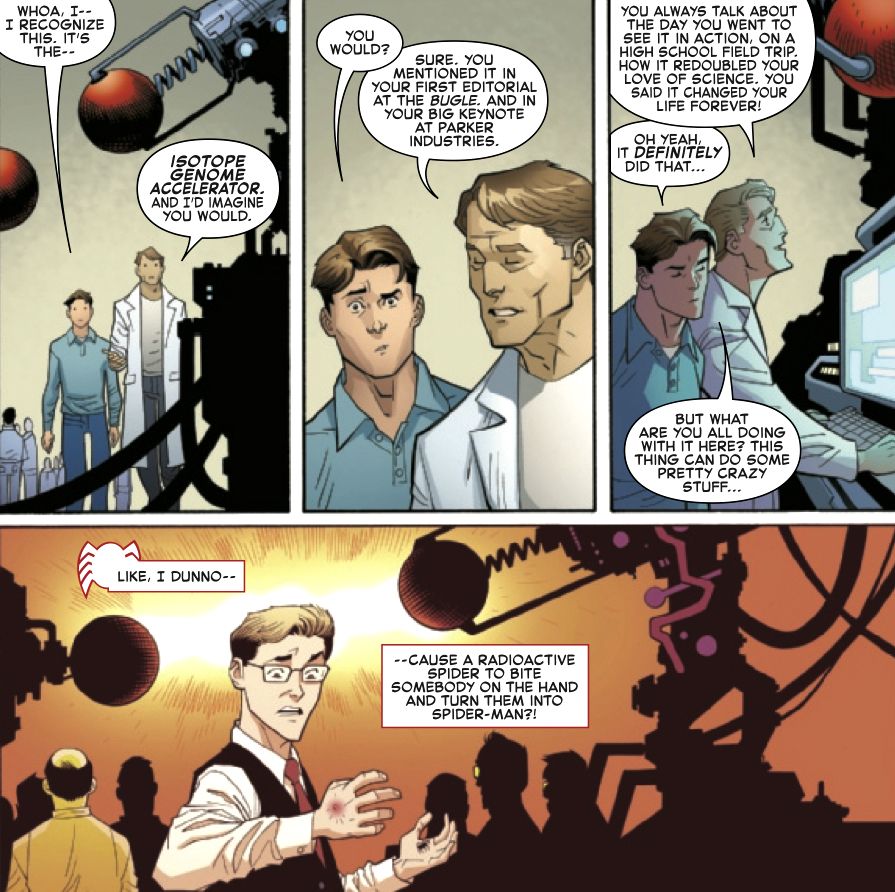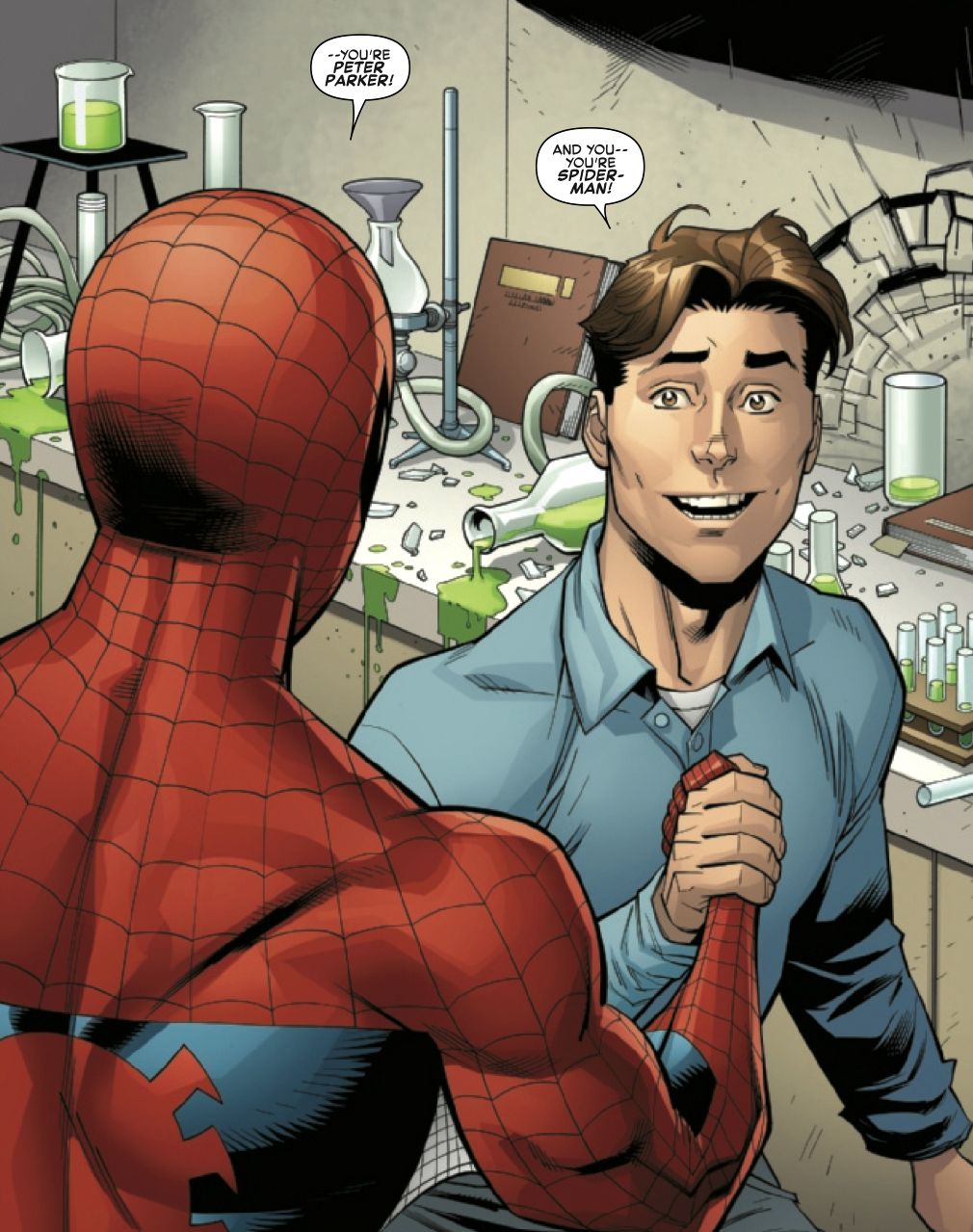WARNING: This article contains spoilers for Amazing Spider-Man #2 by Nick Spencer, Ryan Ottley, Cliff Rathburn, Laura Martin and VC's Joe Caramagna, on sale now.
It's hard to have a secret identity when you're a superhero in the Marvel Universe. Not only do you need to concentrate on saving lives, but it's also in your best interest to focus on having a personal life outside the spandex -- office workers aren't the only people who have to juggle a work/life balance. One superhero in particular who always seems to struggle mixing the heroics with spending time with the important people in their life is the Amazing Spider-Man.
Life has been pretty rough for Spider-Man and his civilian identity of Peter Parker lately, starting with Peter's billion-dollar company, Parker Industries, closing its doors following the Secret Empire event. Things started to look up, however, when his old friend Robbie Robertson offered Peter the Science Editor position at the Daily Bugle. Of course, the good ol' Parker Luck reared its head and quickly took another dream position away from Peter in the very first issue of Nick Spencer and Ryan Ottley's Amazing Spider-Man run.
RELATED: Amazing Spider-Man Editor Promises No More Spoilers
After it was discovered that one of Peter's papers during his graduate study was really the work of Otto Octavius (who turned in the paper while occupying Peter's body), he was stripped of his graduate degree by Empire State University. As bad as that may seem, if there is one thing Peter has excelled at, it's his ability to rebound from disastrous events. ESU was nice enough to allow Peter to go back to school in order to try and regain his degree honorably, with his first class being taught by Curt Conners, who is also known as the Spider-Man villain, The Lizard.
An Adamantium Inhibitor Chip Keeps The Lizard Away
Now, you might be wondering how and why ESU would employ Curt Conners after being fully aware of how he turns into a rampaging lizard monster. Aside from being the college of second chances, Curt and his students have developed a new Adamantium-encased inhibitor chip that's surgically embedded into the back of his neck. If at any point he attempts to harm another human while in Lizard form, the inhibitor will leave Curt paralyzed until he reverts back to his normal, human self.
RELATED: Amazing Spider-Man's First Arc May Have a Second, 'Secret' Title
This is a good thing, because Curt is doing some pretty impressive work that conveniently ties back to Peter's origin as Spider-Man. Remember earlier how we mentioned the problems that occur for superheroes trying to lead a double life? Well, there now looks to be a solution, and it all ties back to the fateful day a radioactive spider changed Peter Parker's life forever.
Page 2: [valnet-url-page page=2 paginated=0 text='How%20Can%20Peter%20Parker%20and%20Spider-Man%20Be%20in%20the%20Same%20Place%20at%20the%20Same%20Time%3F']
It Takes Two To Make A Thing Go Right
One reason Curt lobbied to have Peter in his class was because of their shared interest in science. When they're not being lizards and spiders, Curt and Peter have always bonded over the joys of discovery, which is what led Curt to experiment with the isotope genome accelerator. The name may not ring any immediate bells, but it played an important role in the Marvel Universe as the device that granted Peter his Spider-Man abilities.
As Curt explains, the accelerator is normally used to transfer characteristics of one organism to another. Using Peter as an example, once the spider got hit with the accelerator's energy waves, the act of the spider biting Peter passed those spider characteristics over to him. However, Curt is currently trying to reverse-engineer this effect, so instead of bonding two traits, the machine can now separate.
RELATED: A Brand New, Totally Unholy Villain Has Major Plans for Spider-Man
What makes this such a big deal is if successful, it would allow Curt to separate himself from the Lizard persona that has caused him so much grief over the years. Of course, we're interrupted before learning if Curt succeeded by Taskmaster and the Black Ant, who have been contracted to steal something from the classroom.
Curt tries to stop the villains by turning into The Lizard, but his inhibitor chip actually does its job by preventing the change from happening. Peter is left to cause a distraction by mixing some chemicals together long enough to allow him to change to Spider-Man and stop the duo. The major takeaway isn't Spider-Man winning for a change. Afterall, stopping the likes of Taskmaster and Black Ant should be fairly simple. No, the big reveal is once the fog has lifted, we're left with Peter Parker and Spider-Man shaking hands and talking to each other face-to-face.
Going back over the events, it appears that whatever green substance was in the vials that Peter mixed together to cause the diversion split his two identities from one another. It's quite possible the green substance is a byproduct of the isotope genome accelerator Curt and his students were experimenting with earlier. As a matter of fact, the green color choice of the liquid also matches The Lizard, making that theory more plausible.
Of course, Spider-Man has played the two-places-at-once trick a number of times, most notably whenever he has to convince someone Spider-Man and Peter Parker aren't one and the same. What usually happens is Spider-Man will get a trusted ally to put on the suit while Peter makes sure the two of them can be seen together, thus throwing any would-be detectives off the scent. Unless Peter conveniently had a trusted friend nearby when Taskmaster and Black Ant stormed in, then Spencer and Ottley have set up a familiar twist in a new, exciting way.
RELATED: In Amazing Spider-Man #1, It's Really, Really Happening!
Marvel released the cover for Amazing Spider-Man #3 back in May, showing the web-slinger and Peter Parker angrily facing one another and promising a showdown of epic proportions. The conclusion of Amazing Spider-Man #2 has the two characters looking happy, so what could force these feelings to change so rapidly? Plus, are Peter and Spider-Man really split apart? Is the change permanent, and if not, how do they merge back together?
There are still many questions left to be answered, which makes following Spider-Man's crazy adventures all the more entertaining, because we never know what to expect next. Luckily, the wait won't be long, as the next issue of Amazing Spider-Man arrives in two weeks on August 8.




